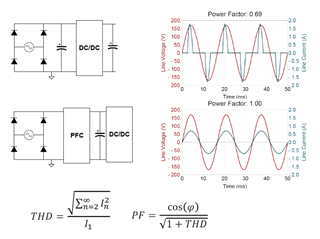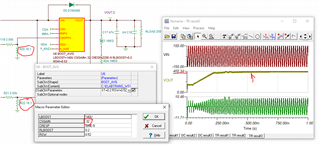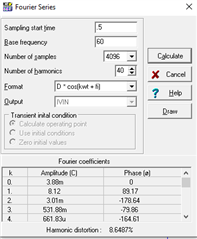Dear all,
using the TI TINA example UCC28070_trans for simulating a PFC I have several questions:
- First of all, the example works with the given load. But when I change the load to 250 Ohm (about 600W) the output voltage does not reach 400V any more. Why does it behaves like this?
- Why is there a high inrush current @I_In of 6kA although using Bypass-diode D5
- Where do I find a inner schematic of the blocks "boot_AVG"? What is the Input "CSOFFX"?
The example I attached.
Now I have a general question for TI TINA:
- How can I calculate a power factor when having V_In and I_In?
I use TINA 9.3.200
Regards and thank you for helping me!
Andreas






